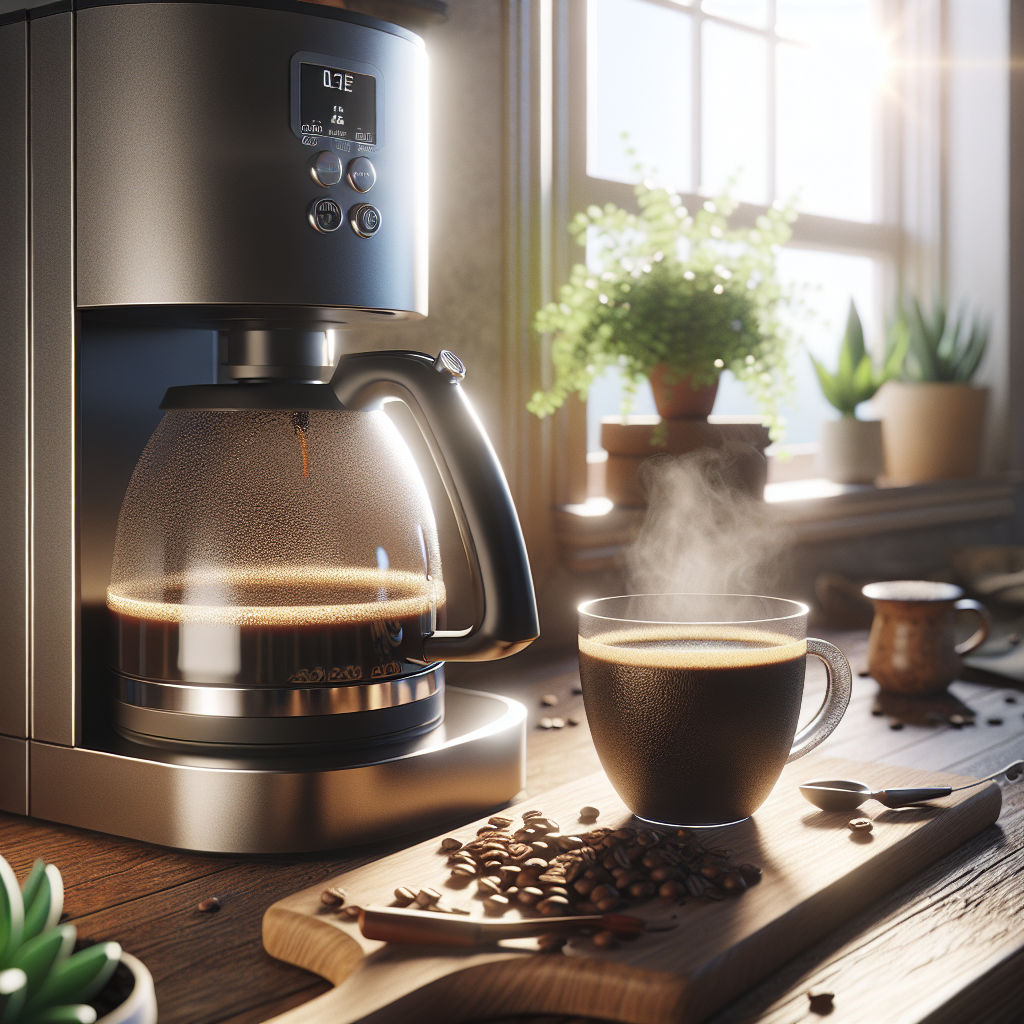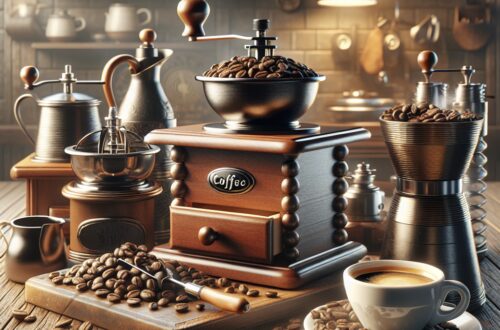“`html
The Best Way to Brew Coffee at Home for Beginners
Coffee brewing can be an art as much as it is a daily ritual. For those just beginning their journey into the world of coffee, it can be helpful to understand the many different brewing methods and how each one can bring out unique flavors and experiences. Start with fresh, whole bean coffee and invest in a quality burr grinder to ensure a consistent grind size, which is essential for optimal extraction and flavor. This guide will walk you through key aspects of brewing the perfect cup at home.
Exploring Different Brewing Methods
| Brewing Method | Description | Flavor Profile | Ease of Use |
|---|---|---|---|
| Drip Coffee Maker | Convenient for quick and easy brewing. | Balanced and straightforward flavor. | Easy |
| French Press | Offers a rich, full-bodied taste. | Strong and robust flavor. | Moderate |
| Aeropress | Versatile and suitable for beginners. | Smooth with less bitterness. | Very Easy |
| Pour-Over (Chemex, V60) | Gives control over the brewing process. | Clear and nuanced flavors. | Moderate |
| Espresso Machine | For those who love concentrated coffee shots. | Intense and bold flavor. | Advanced |
| Cold Brew | Produces a refreshing, low-acid coffee. | Sweet and smooth flavor. | Easy |
1. Why Start with Fresh, Whole Bean Coffee and a Burr Grinder?
Experience unrivaled freshness and flavor by starting with whole bean coffee. Whole beans retain freshness longer than pre-ground coffee, maintaining their aroma and nuanced flavors. Investing in a quality burr grinder is crucial as it ensures a consistent grind size, essential for balanced extraction and taste. Unlike cheap blade grinders that produce uneven grounds, a burr grinder produces a uniform grind size, leading to a better-tasting brew.
Grinding your coffee just before brewing maximizes the taste, offering you a rich and well-rounded cup every time. Make this small investment, and you’ll quickly notice the difference fresh, evenly ground coffee makes in your daily cup.
2. Exploring Different Brewing Methods
Choosing the right brewing method can significantly impact your coffee experience. Here are a few to consider:
- Drip Coffee Maker: Convenient and ideal for quick, easy brewing with a balanced flavor profile.
- French Press: Delivers a strong, rich, full-bodied taste, though it requires a bit more effort and time.
- Aeropress: Highly versatile, easy to use, and suitable for beginners seeking a smooth cup with less bitterness.
- Pour-Over (Chemex, V60): Offers control over the brewing process, resulting in clear, nuanced flavors.
- Espresso Machine: Produces intense and bold flavors for those who enjoy concentrated coffee shots, but comes with a steeper learning curve.
- Cold Brew: Ideal for a refreshing, low-acid coffee with a sweet, smooth flavor.
Each method impacts the flavor, strength, and mouthfeel of your coffee differently. Choose one that aligns with your lifestyle and taste preferences. Want to delve deeper into coffee brewing? Explore our Coffee FAQ here.
3. The Aeropress: A Beginner’s Best Friend
The Aeropress is an excellent option for beginners. Priced around $30, it’s affordable and simple to use with minimal parts and easy cleanup. Its compact design makes it perfect for small kitchens or travel. The Aeropress can brew coffee in under two minutes, making it ideal for busy mornings. Versatile enough to make espresso-style coffee, Americanos, or cold brew, it’s a flexible brewing method that allows experimentation with different recipes and techniques. Enjoy a rich, smooth cup with less bitterness, and discover why the Aeropress is highly recommended for those starting their coffee journey.
4. Importance of Coffee-to-Water Ratio
A crucial factor in brewing a great cup of coffee is getting the coffee-to-water ratio correct. The general guideline is about 1-2 tablespoons of coffee per 6 ounces of water, but this can be adjusted according to taste. Too little coffee results in weak, underwhelming flavors, while too much coffee can lead to an overly strong and bitter brew. Accurately measure your coffee and water for consistency. Using a digital scale ensures precise measurements, particularly important in methods like pour-over. Experiment to find your perfect balance and document your ratios and results to replicate your favorite brews consistently.
5. Preparing Your Water for Optimal Brewing
Water temperature plays a vital role in coffee extraction. Boil your water and let it cool to around 200°F (93°C) before brewing. Water that’s too hot can scorch coffee grounds, resulting in a burnt taste, while boiling water may cause over-extraction, negatively affecting the flavor. Using a thermometer helps monitor water temperature for accuracy. Clean, impurity-free water significantly enhances coffee taste. Consider using filtered or bottled water for consistency. Proper water temperature and quality are essential for extracting the best flavors from your coffee.
6. Getting the Right Grind Size for Your Brew Method
The grind size of your coffee beans should match your brewing method to ensure optimal extraction:
- Coarser Grind: Ideal for French press, ensuring easy filtering and reduced sediment.
- Medium Grind: Suitable for drip coffee makers, providing balanced extraction.
- Fine Grind: Necessary for espresso machines, allowing proper pressure buildup.
Experimenting with grind size can help you achieve your preferred coffee strength; finer grinds produce stronger coffee, while coarser grinds result in milder flavors. Adjust your grinder settings to find the optimal grind size for your chosen method. Consistency in grind size leads to even extraction and better flavor. Incorrect grind size can cause under or over-extraction, impacting the taste of your coffee.
7. Pre-Wetting Coffee Filters and Steeping Time
Pre-wetting your coffee filter removes any paper taste and preheats the brewing equipment. In drip coffee, this ensures the brewing chamber is evenly heated. For French press, a steep time of about 4 minutes provides balanced extraction, while the Aeropress typically requires between 30 seconds to 1 minute of steep time, depending on the recipe. Timely steeping prevents over or under-extraction. Consistent steeping times lead to consistent results, so experiment with different steeping durations to perfect your desired flavor profile.
8. Maintaining Clean Equipment and Proper Bean Storage
Regularly cleaning your coffee maker, grinder, and other equipment is essential for maintaining flavor integrity. Residual oils and old grounds can negatively affect coffee taste. Use vinegar, baking soda, or specialized cleaning products for thorough cleaning. Store your coffee beans in an airtight container to prevent exposure to oxygen, keeping them in a cool, dark place to preserve freshness. Avoid storing beans in the fridge or freezer to prevent moisture accumulation. Freshness significantly impacts the taste, as stale beans yield flat and uninspiring coffee. Rotate your stock to use the oldest beans first, ensuring minimal waste and maximizing freshness.
By following these guidelines, you can elevate your coffee-making experience at home. To further enhance your coffee knowledge, explore more about brewing methods and tips in our Coffee FAQ here. Happy brewing!
“`
Shop at Breville now!
https://breville.oie8.net/oqDqrE
Shop Coffee Machine at Amazon now!
Click here!





